 |
SRGC Bulb Log Diary |
| Home Recommend This Site To A Friend |
|
BULB LOG 20 ---- 13 May 2004 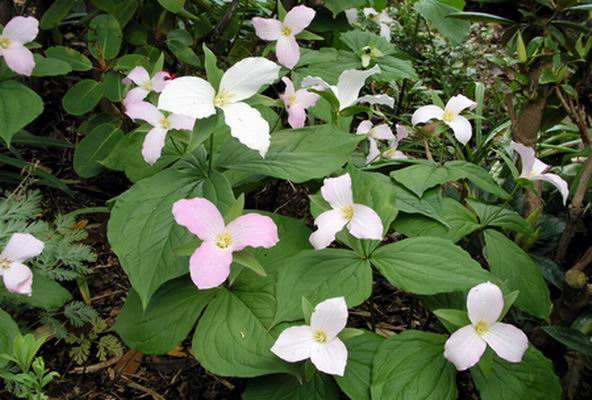 Trillium grandiflorum seedlings There is a wide range of flower shape and size as well as the colour. 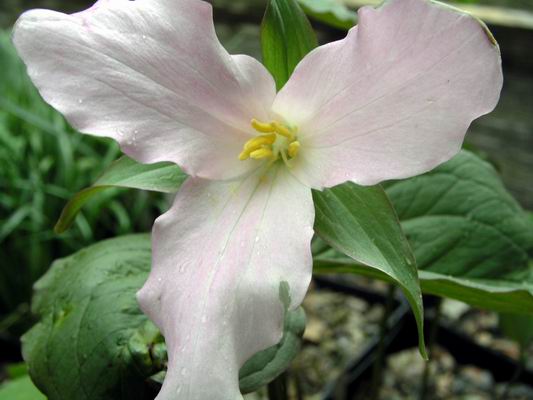 Trillium grandiflorum collected. This is a seedling plant grown from seed collected at the site in the wild where the pink ones grow, so I will be able to cross pollinate and introduce an even wider range of genes into our garden population. 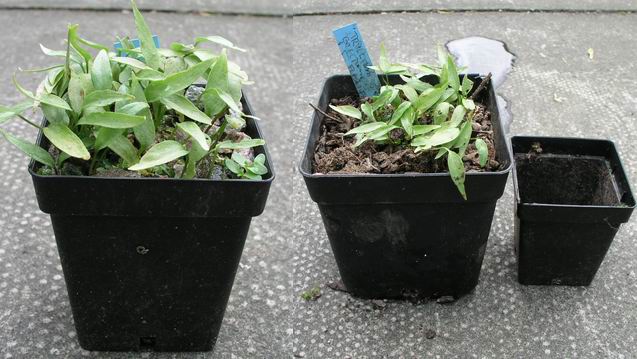 Trillium seed pot. On the left is a 7cm pot of trillium seedlings, on the right you can see that I have potted it on en-masse into an 11cm pot which will allow the seedlings to grow that bit bigger and better this season. (I have left the empty 7cm pot to show the scale) Many of our frits are going back much earlier this year - about two to three weeks sooner than has been normal. I put this down to the poor weather conditions when they were flowering. This has meant that despite my visits with the paint brush and the attention of the wasps many are not going to set seed this year - so they are going dormant sooner. This gives us a few extra problems. 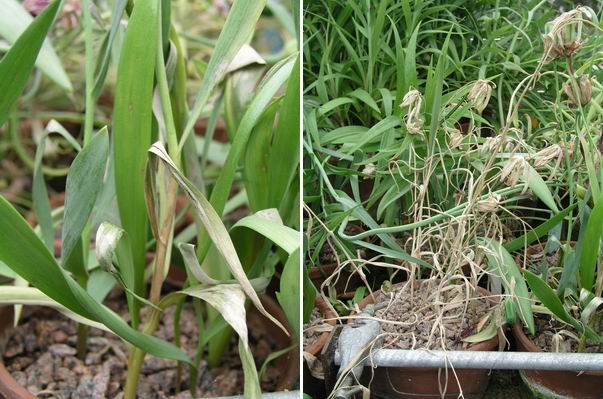 Frit leaves. On the left you will see that the leaves are going yellow and because of the cold damp weather they are contracting botrytis. If this happens on a stem that is setting seed it is important to remove the infected leaves quickly because this fungal attack can transmit from the leaf to the stem and you will lose the seed. Also, because the stems on the right have died back completely so early, I will also remove them (by plucking sharply while holding my fingers on the gravel) this is to remove any risk of botrytis getting down to the bulbs. No water will be given to these frits now, I will just make sure that the plunge does not dry out completely. 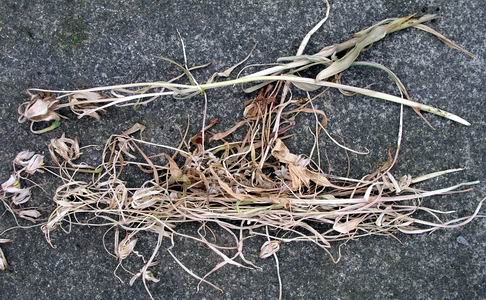 Frit stems removed 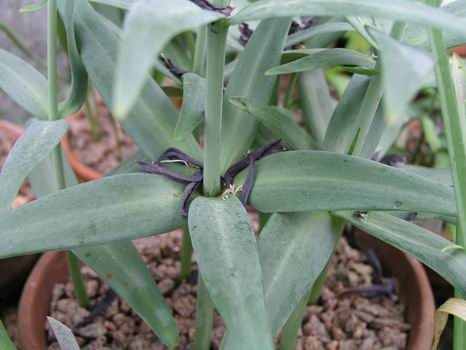 Frit affinis leaves. Fallen petals from the flowers should also be removed, especially when they land on the leaves, as they will also attract botrytis in the damp conditions. 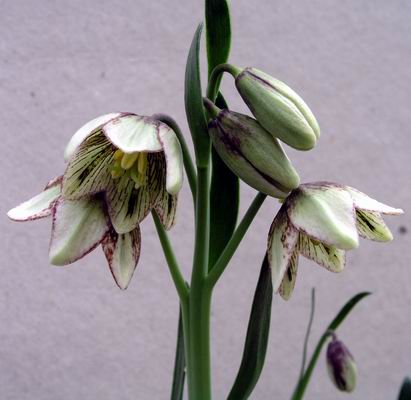 Fritillaria 'Martha Roderick'. Some frits like this 'Martha Roderick' are just coming into flower now which shows what a long flowering season we can get from a collection of fritillaries. 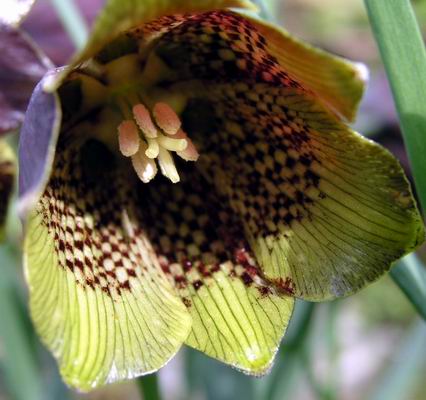 Frit pyrenaica 'Braeside'. Out in the garden there are still plenty of fritillaries in flower, like the wonderful Frit pyrenaica, this is the form called 'Braeside'. 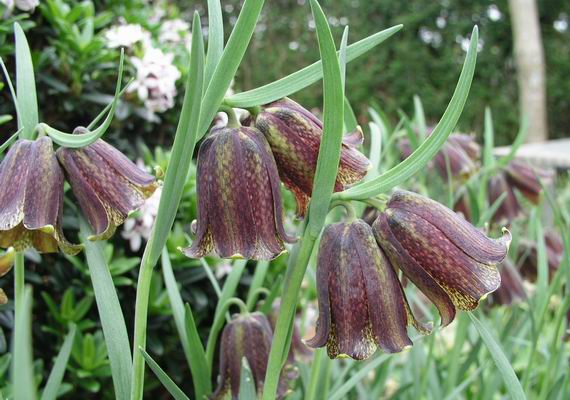 Frit pyrenaica twin. Another taller form we call Frit pyrenaica 'twin' because when it is happy it always produces two flowers to the stem. 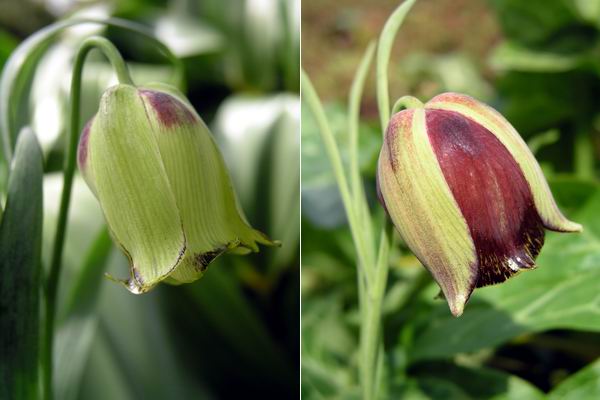 Fritillaria acmopetela. Two forms of Fritillaria acmopetela indicate the range of forms that this easily grown bulb can offer, they can go from all yellow to all brown. 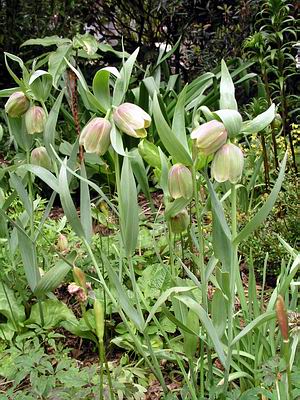 Frit pontica Like Fritillaria acmopetela, Frit pontica is also very easy to grow, it is especially suited to growing in the garden. 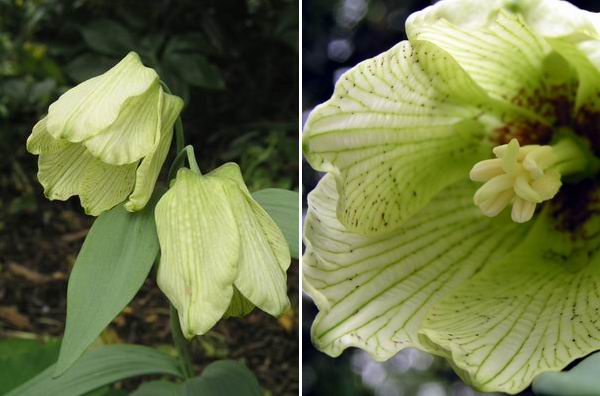 Frit pallidiflora x2. The Frit pallidiflora in last week's log was grown from seed, this form came in from China and is slightly different in some characteristics. Even though it was supposed to be F. walujewi it is a welcome addition to our garden. 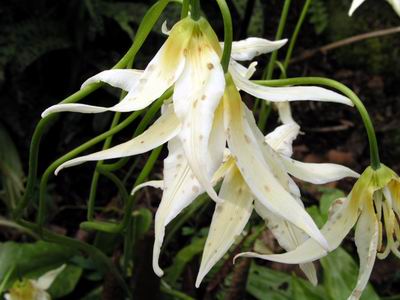 Erythronium flowers. It is not just the Frits that have disliked the cold damp weather, this is what the hail storms have done to the Erythronium flowers. 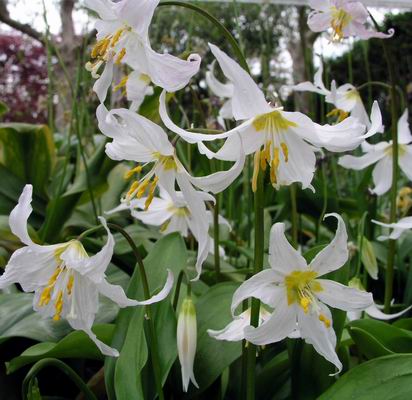 Erythronium montanum. These flowers on Erythronium montanum are always the last to appear and they have been protected by the cover over the frame that they are growing in. ^ back to the top ^ |